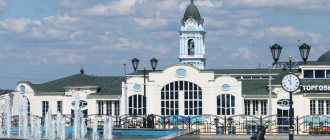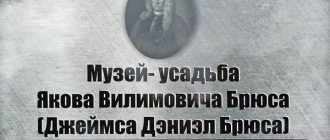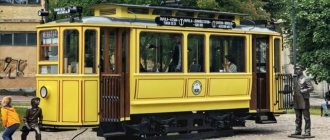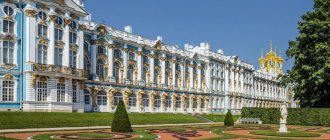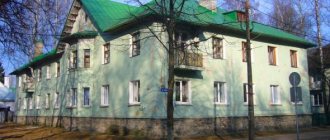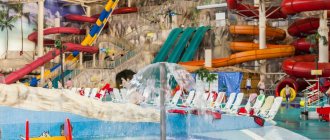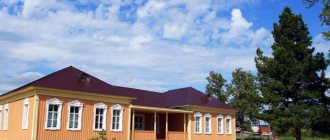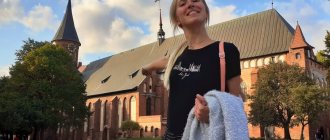Greetings from the heads of Sosnovy Bor District
Mikhail Vasilyevich VORONKOV, head of administration and head of Sosnovoborsky urban district
Dear friends!
On behalf of all residents of Sosnovy Bor, we are pleased to welcome you to the main page of the Sosnovy Bor urban district section on the website of the Leningrad Regional News Agency.
Our city is one of the youngest in North-West Russia. It was built as an atomic city, a satellite city of the Leningrad nuclear power plant.
Today Sosnovy Bor is the Northwestern scientific and industrial center of nuclear energy of the Russian Federation, and is also considered one of the most beautiful and comfortable cities in Russia.
On these pages you can get to know the life of our rapidly developing city, its past and present, the people living here, get information about the development of our economy, social sphere, projects in the field of education, healthcare, and culture.
Head of Administration and Head of Sosnovoborsky Urban District Mikhail VORONKOV
general information
Heraldic description of the coat of arms of the city of Sosnovy Bor:
“In a field divided into four azure and green, there is a silver belt longitudinally divided by a narrow azure stripe (thread), at the top it is walled and jagged in accordance with the shield, at the bottom it is wavy, accompanied in each of the azure quarters of the field by a pair of silver fish in a column.
In the first green quarter there is a golden rhomboidal through octafoil, the odd leaves of which are smaller than the even ones, having a golden bezant in the middle and accompanied at the head by the same radial crown with three visible teeth and two short ones, and in the second green part - a golden castle with a green arch, o two towers with pointed roofs and with the same roof in the middle, above which there is a spire, which castle is accompanied by an abstract overturned rafters connected at the ends with two shingles.”
The coat of arms unites in symbolic images the unity and continuity of the historical past and the present on the land of the ancient principality of Izhora, on which the city of power engineers Sosnovy Bor, a border city on the maritime borders of North-West Russia, was built.
This is expressed in the fact that the main figure of the coat of arms is based on a fortress battlement - a heraldic image from the coat of arms of the Principality of Izhora (approved on March 3, 1730). The wavy silver stream is the border of the sea borders in the Baltic.
The golden “energy crown” above the symbol of the atomic nucleus means the energy of the peaceful atom and the Leningrad Nuclear Power Plant as the first-born among the giants of nuclear energy. The golden symbols of the city are a building element characteristic of the city’s layout and the children’s play complex “Andersengrad”, an architectural monument of the twentieth century as the main attraction of the city .
The colors of the coat of arms symbolize peace, purity, environmentalism, prosperity and hope.
Doctors in a Russian city with a nuclear power plant are sounding the alarm
The city clinic, the first to be hit by a new dangerous virus, was being “sewn up”: doctors left for St. Petersburg and Moscow for decent salaries and payments required by law.
Of course, it was difficult for all doctors in the world during the pandemic. But doctors in Sosnovy Bor talk about completely inhumane treatment, tiny bonuses, non-compliance with direct orders of the president, gigantic overtime - and a complete lack of documents recording this emergency. In large cities, scandals involving non-payment to doctors and the lack of required protective equipment thundered in the media and were in plain sight. It was quieter in small towns, but now doctors in Sosnovy Bor are openly rebelling, as they themselves say, they have “nothing to lose.” Moreover, the world has come close to the “second wave”.
Sosnovy Bor doctors have been waiting a long time for their due payments, but have still received extremely modest bonuses. They wrote to the prosecutor’s office and filed a lawsuit... But the situation is complicated by the fact that all communications and decisions here go through Moscow - the clinic is subordinate to the FMBA (Federal Medical and Biological Agency), that is, for example, it makes no sense to file a claim with the Leningrad Regional Health Committee. “MK” visited Sosnovy Bor until the city again became a “red zone”.
The head of the clinic (full name - Federal State Budgetary Institution Central Medical Hospital 38 FMBA) Ekaterina Sumtsova agrees that the pandemic is an emergency, stressful situation for everyone - both officials and doctors. Naturally, everyone was wrong. But mistakes need to be worked on, as was the case in many institutions where bureaucratic failures were corrected. In Sosnovy Bor, things are still there, with what forces and with what motivation to work during the “second wave” is unclear... In the clinic, for example, four district nurses were ill with COVID-19, but they did not receive insurance payments. In St. Petersburg, such situations turn into loud scandals. Here everything was put on the brakes.
— Our pandemic started on March 15, when people began to come from abroad - and we have St. Petersburg nearby, there is a large flow of people who travel abroad. In addition, at that time there was a seasonal increase in the incidence of influenza - March-April is always a “hot” time for us. – says the manager. “Since April, the first coronavirus patients began testing positive, and in June we entered the “red zone.” By all indications of the situation, additional labor agreements should have been concluded with us, which would have spelled out our harmful factors - as was done in all institutions - but this did not happen.
Work on the bus and additional payment of 503 rubles
As follows from Ekaterina’s story, instead of documented orders, doctors were verbally sent to “work on the bus,” where they were supposed to receive patients with suspected COVID-19.” This bus, attached to the Leningrad NPP health center, is usually used for a mobile seasonal flu vaccination laboratory. But during the “Covid” period, the bus was parked in the hospital campus, making it a reception point for patients with fever - who were considered known to be infected with COVID-19. “We had to be on duty there for twelve to sixteen hours, there was no nurse or cleaner - the doctor did everything alone, and the only disinfectants we were given were ordinary skin antiseptics. But when a patient comes with an acute respiratory viral disease, he may have sputum, vomiting - all this needs to be cleaned and disinfected after each patient, but how? No nurse, no help. There is only one doctor on the bus with napkins. We had to eat in the same room, and, of course, there is no sewage system. In addition, during the period of work on the bus we were not released from work at the clinic. The schedule turned out like this: the doctor saw patients all day long (and the workload was colossal, with the standard twenty-three patients per rate, sixty to seventy people were seen), and after such an appointment he went on duty for the night on the bus. And after the night I went back to the clinic!” - says Ekaterina.
Payment with surcharge.
— Do I understand correctly that the additional payment was minimal?
— We were paid extra for the hours, and absolutely tiny money. At first it was like this everywhere, then by order of the president it was corrected - but not here. And according to the law, after such duty there is a day off and “sleep” - our doctors were deprived of this. When we started talking about this, when I wrote a report about the need to issue an order, to prepare a regulatory framework to document that we are working with COVID-19, so that the right to rest, to additional days for vacation was recorded - this was very negative reacted. The order was issued from afar, but I call it “treacherous” because it stated that we “will be involved in work in the emergency department (including the infectious diseases department).” That is, you see, again we formally do not seem to be working with COVID-19, because the emergency department is considered “clean”. In fact, we were put on a bus and then sent to the infectious diseases department. When a patient with confirmed COVID-19 needed emergency care, nurses called doctors from the emergency room - and then we didn’t even have normal protective equipment.
As a result, we did not fall under the provisions of resolution number 484. And we did not receive payments under resolution 415 in full. Because most of the time, according to documents, we worked in the emergency room. I worked as a therapist and received 503 rubles for June - that’s my bonus. For May - zero rubles.
When the “Covid department” opened at the maternity hospital, seven local therapists were taken from me there, leaving three for the rest of the city of sixty thousand. There is a standard - fourteen calls per doctor per day. We had one hundred and fifty calls a day! We drove home until nightfall; once during the “hot” period they didn’t even let me into the apartment because I arrived at half past one in the morning. I called, I said, I’m a doctor, and they answered: doctors don’t go home at this time.
By the way, in the evenings the doctors walked home. After all, drivers have a working day of up to five. The driver worked and left, and the doctor had a queue of calls. And you need to carry protective suits, cards, and disinfectants with you.
“We were given suits that were not breathable, it was very difficult in them, the doctors had heat strokes. It’s good that Leningrad NPP helped us - they provided us with a car with a driver, although they were not obliged to do this. We saw that LNPP drivers have suits of a completely different quality - breathable, you can live in them. They eventually took pity and gave us from their reserves, saying: girls, we can’t look at you. We worked in these suits that the drivers gave us. We only had three cars – two from the Center for Medical Emergency and one from the Leningrad NPP.” - the manager recalls.
Head: Ekaterina Sumtsova.
The doctors tried to reach the management, interrogate normal suits - there is even a video from a meeting with and. O. by the head of the Center for Medical Emergency Mikhail Davidenko, where he is shown the difference between the suit donated by the Leningrad NPP driver and what the doctors were given at their main job. “We are not asking to be loved, we are asking to be respected,” doctors reasonably note. When Davidenko is told that even with this attitude, the clinic suffered the first blow of COVID-19, he replies:
- Naturally, of course, you are the primary link! The blow fell on you.
“I had to involve shop service doctors in the work - those who work with LNPP employees, with the attached contingent, because there weren’t enough of our own people. – Sumtsova continues. — After all, for example, according to government decree, older doctors had to be protected from working with COVID-19. Doctors of the shop service are generally not obliged by contract to agree to such work, they asked - will we be paid for this? Some doctors quit due to low salaries and went to Moscow and St. Petersburg during the pandemic, where salaries are much higher and there are all the payments required by law - and not based on hours and minutes. The management promised me that there would be payments, I promised this to the doctors. And then we received these pennies - bonuses of five hundred rubles, some doctors received six thousand, nurses - three thousand. And they told me – that’s all, nothing more will happen. What did the employees do to me then!”
No sleep, no rest
Sumtsova shows documents - an order to transfer to a seven-day (!) working week, a statement of additional payments: five hundred three rubles and seven kopecks for the month of June and zero for May. Meanwhile, Resolution 415 provides for additional payment for special working conditions and additional workload - and applies not only to doctors working in hospitals officially repurposed for COVID-19.
Many doctors could not stand this attitude, quit and moved to large cities, where the conditions are more decent. For example, the head of the shop service of the first therapeutic department for servicing the assigned contingent, Tatyana Kotyurgina, quit and went to work in a private St. Petersburg clinic. By profession, she is an occupational pathologist - a specialist in occupational diseases; in “peacetime” she worked with nuclear scientists. We meet her in the city. It is clear that she is very worried about her former colleagues. She says that during the “hottest” times, she supported and encouraged the doctors of her department. Everyone thought that there would be payments, that orders to work with COVID-19 would be issued. It’s just that the regulatory framework is always late, the bureaucratic machine works slowly.
“In my department there were ten doctors and ten nurses,” says Tatyana Gennadievna. “And we were forced by verbal order to work in the infectious diseases department, where there were feverish patients with both suspected COVID-19 and a confirmed diagnosis. We were not formalized in any way; we did not receive any documents in response to our demands.”
The doctor also recalls the story with the bus: it seems that in Sosnovy Bor they will remember it for a long time:
“From April 11, we were also sent to work on the bus, which I categorically refused to do. There are no conditions there: a patient is brought to you at night, no nurses, no one. If you turn on a dim light, it is impossible to carry out any processing. When I refused to be on duty there, there was a wave of indignation, and we were given a small room in the infectious diseases department. It was a doctor's nook, literally six or seven square meters. And no one carried out any processing there, although I constantly said that it was needed. While I was on duty there, I simply watered everything around with a regular skin antiseptic. It often happened that we admitted a patient with a fever, and then his diagnosis of COVID-19 was confirmed. At the same time, in this kind of “office” there were no buckets or rags - I brought my own rag once, cleaned everything there, and then threw the rag away. We didn’t wear personal protective equipment there either, as you can see in the photo - we were given thin surgical gowns, caps and masks.
— When did they start issuing PPE?
— During all the time I worked, they never started. Two doctors who were officially employed in the infectious diseases department and worked during the day wore anti-plague suits. It was shown on TV. And the rest seemed to simply not exist - all the other doctors at the clinic, although they also worked with COVID-19, including those who went to work at night in infectious diseases, were not included in any report card. District and shop doctors worked in the clinic during the day, then were on duty in the infectious diseases department from 16:00 to 8:00 in the morning (the duty was sixteen hours), and in the morning they returned to work at the clinic. At the same time, no days off or additional days were provided for vacation.
"Nameless" doctors
According to Tatyana Gennadievna, when she came on her first duty in the infectious diseases department and tried to enter the automated workplace (an automated workplace - a system that records who exactly is working - approx. A.S. ), she discovered that this was impossible, since doctors were not listed as working in the infectious diseases department. “I started calling the doctors who worked before me, and they told me that absolutely everyone works under the same password, under the name of the same doctor. That is, it is impossible to prove that many people went to work; according to the law, it is as if we had never encountered COVID-19. We were such nameless employees of the invisible front. Our doctors wrote about the problem both through the State Services website and to the prosecutor’s office. Lawyers helped draw up a report for the management of the FMBA - but all this had no effect.” - she says.
— How many such doctors were there? Who worked with COVID-19, but remained “nameless”?
— There are six of mine. The district police officers are approximately twelve people. But my average age of doctors is fifty-eight years old, and I tried not to attract those with a complicated medical history.
At the same time, no one relieved doctors from their main work. “We have an assigned contingent - we need to call them every day, contact them - and there are one hundred and fifty people there. At the same time, there is only one mobile phone from the clinic. We communicated with patients from our personal numbers, spending two to three thousand rubles on this. And then we received bonuses - six thousand for doctors, three thousand for nurses - and that’s it! I repeatedly raised the issue of paying for mobile communication services, but they could only hear me after contacting higher authorities. I and other employees did not receive payments for risks associated with working with COVID-19 under Government Decree 415.”
Tatyana Gennadievna even says that salaries are being cut altogether. After all, they are formed from a salary (which is usually lower than the minimum wage, for example, for Kotyurgina it was about seven thousand rubles) and a qualitative-quantitative bonus. These bonuses, according to the former head of the department, are now being “cut off.” Under such conditions, where does one get the motivation to work hard during the second wave?
The doctors contacted the city prosecutor’s office, which issued a complaint back in August, identifying “violations of labor legislation and legislation on incentive payments in connection with the provision of medical care during the spread of COVID-19.” The text states that the additional payments did not take into account the difference in working conditions.
Will additional agreements be concluded with doctors ahead of the second wave of coronavirus? Will doctors be able to receive payments, including insurance, if they become infected at work? MK sent a corresponding request to the FMBA. They also asked at what stage the correction of violations identified by the prosecutor’s office is at. The official response from the department has not yet come, but I was verbally informed that the doctors of the clinic, in particular Ekaterina Sumtsova, simply had a personal conflict with the management. The FMBA conducted an internal investigation, and the prosecutor's office found no violations. The payments allegedly also arrived – a couple of days after I talked with the doctors. I ask them: did the money really come? 7,143 rubles arrived. “Do not deny yourself anything.”
The situation in Sosnovy Bor is local, but Moscow and St. Petersburg are not the whole of Russia, there are thousands of such small towns in our country, and if in the capital the media and society immediately react to the lack of PPE and payments to doctors, then in this other, big Russia, specialists have to quietly experiencing pandemic hell to the refrain “what did you want, in war as in war.” I would like to believe that the situation will improve, and doctors will be able to work with dignity not only in large cities.
